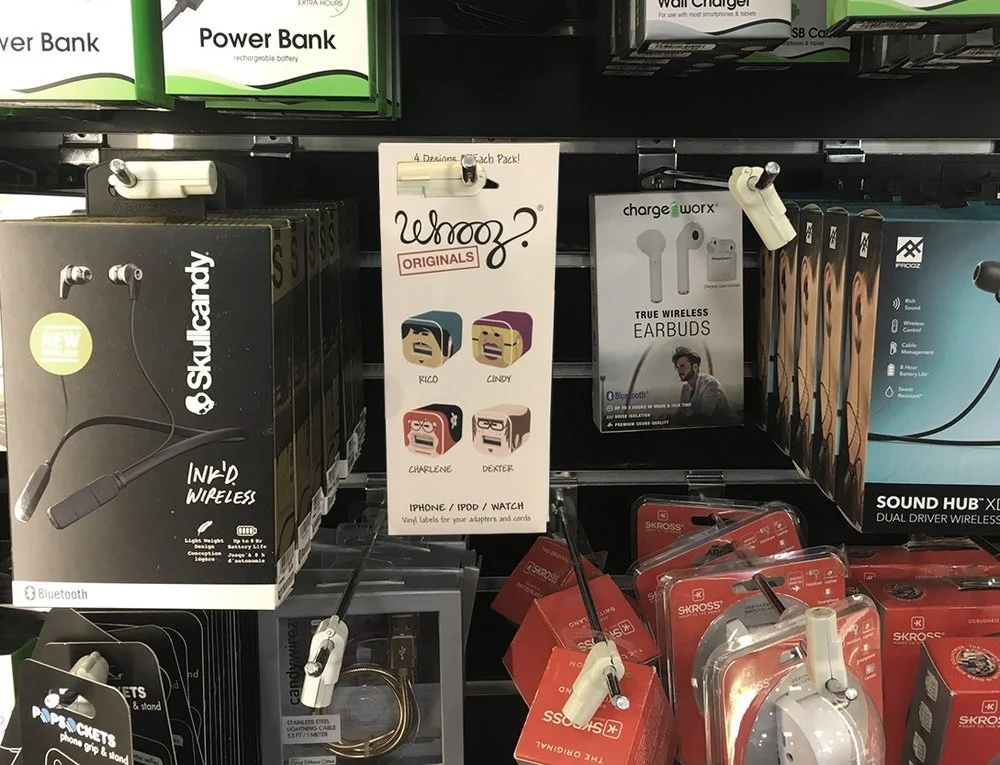Operational Lab and Launchpad
Founder | CEO | 2010 - 2019
Whooz was my hands-on MBA — a product and business I built intentionally so I could experiment and learn. I launched with a Kickstarter campaign and ran every aspect myself, from kitting and fulfillment to sales outreach and channel strategy. Over time, I cycled through production models (domestic, self-made, overseas, hyperlocal), experimented with revenue streams (pop-ups, Amazon, big-box retail, DTC, and wholesale), and even expanded internationally through a partner in Malaysia. When I was ready to shift focus to my second company, I sold a portion of the business, shut down non-essential channels, and streamlined the rest into a low-touch, high-margin operation serving Amazon and Uncommon Goods.
Whooz gave me a blank slate to design and redesign operations from scratch. I tested everything I could — always starting by doing the task myself before outsourcing. In the first three years alone, I worked with seven manufacturers, explored five different production workflows, tested ten materials, tried one 3PL, built a kitting team from Craigslist, and partnered with a local nonprofit, Arc, to provide paid jobs for adults with disabilities. Each iteration helped me understand what worked, what didn’t, and why.
I pursued every sales channel and tried every marketing angle — social media ads, trade show booths, press kits, print campaigns, even guerrilla marketing by handing out samples outside Apple Stores. These experiments became a self-directed playbook for how to build systems that flex and adapt as a business grows.
End-to-End, On Purpose
With every new channel, I asked the same question: is this worth it? I tracked performance across DTC, small retailers, catalogs, big-box stores, POS retail, Amazon, and wholesale — measuring not just revenue, but margin, time investment, and operational complexity. I closely monitored sell-through rates, reorder patterns, and inventory aging to better forecast demand and guide production volumes.
Every decision — from cutting a sales channel to switching fulfillment models — was driven by real data. Over time, I developed lightweight but effective planning tools to align supply with sales velocity and avoid dead stock. That discipline led me to concentrate on Amazon and Uncommon Goods — channels that offered predictable demand, efficient fulfillment, and strong margins when supported by a streamlined backend.
Chasing Margin, Not Just Sales
In the final phase of Whooz, I shifted focus from growth to efficiency. I sourced our final material directly from 3M, consolidated the product line to our three best-selling SKUs, and focused exclusively on Amazon and Uncommon Goods — the channels that offered consistent demand with minimal operational drag.
I sunset the e-commerce store, sold the Asian side of the business, and selected a manufacturing partner in Ohio who could handle everything: material purchasing, producing twice a year (pre-holiday and mid-year), assembling and packing in case pack quantities, storing inventory, and fulfilling quarterly replenishment orders. This setup gave me a low-maintenance, high-efficiency operation with predictable cash flow and no daily oversight — a system built to run cleanly, even when I stepped away. Sales flattened but held steady for three more years. Finally, in 2019 I shut it down.



